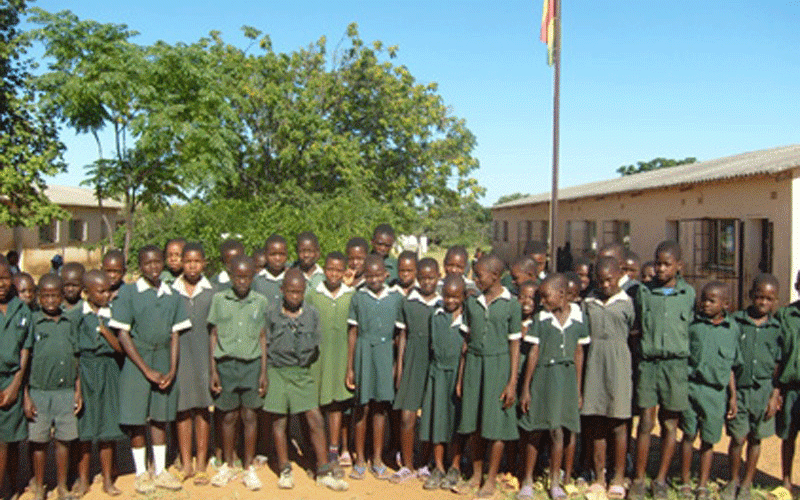
SOCIAL protection is defined as policies or actions that seek to enhance the capacity and well-being of vulnerable and poor people, while addressing equitable economic growth.
Social protection systems will vary from country to country taking into account a number of factors that include the policies and social context of a country.
Over the past decade there has been a commitment by governments to build and strengthen social protection systems in relation to the “leaving no one behind” mantra and attainment of Sustainable Development Goals (SDGs).
The objective of social protection programmes is to address gaps that affect social and economic development by reducing poverty, inequalities and social exclusion.
Income insecurity, affects households and negatively impacts on access to health and education. When economies experience down turn and spending is strained, increased social protection spending is necessary in order to revive the economy.
The emphasis should not just be on poverty reduction but holistically looking at the society at large. The dynamic and unpredictable environment has been worsened by climate change induced disasters, social exclusion and unemployment, further deepening poverty.
In countries that are performing well, poverty exists, especially among vulnerable groups such as the disabled, elderly, migrants, child-headed households hence, some social protection systems are required.
Most social protection programmes focus on improving livelihoods and welfare that enhance access to affordable health and social assistance.
- Harare outlaws illegal vending
- Zim unemployment, education system not directly linked
- Inclusive social protection: Leaving no one behind
- Letters:Unemployment leads to high youth emigration
Keep Reading
Social protection programmes will enable society to balance between addressing immediate needs and progressing towards investment, wealth accumulation and managing risk.
This is specifically important for Zimbabwe as we focus on achieving an upper-middle income economy by 2030. The government of Zimbabwe through its strategy to achieve an upper-middle income economy by 2030 has emphasised the need to safeguard and ring-fence resources targeting vulnerable groups in society and will work with development partners to complement its efforts.
Social protection programmes
Section 30 of the Constitution of Zimbabwe provides for the need to ensure practical social protection measures are implemented with the available resources to all citizens in need.
Other statutory provisions complementing the constitution include, Social Welfare Assistance Act (Chapter 17:06) 1990, Older Persons Act, Disabled Persons Act (1992), Children’s Act among others.
The Ministry of Public Service, Labour and Social Welfareis responsible for implementing most of the social protection programmes with support from other ministries.
According to the World Bank and Zimstat (2019) poverty is widespread in Zimbabwe, and those in extreme poverty increased by 30% in 2017 to 38% in 2019, with 0,4% of the GDP spent on social protection which is far less than other regional comparators.
While there was an increase of the social protection spending from 16% to 37% in the same period, the coverage still remained low. The government of Zimbabwe through the respective ministries is making effort to implement social protection programmes. The Ministry of Primary and Secondary Education, supports school feeding programmes and works with the Ministry of Public Service to provide tuition grants under the Basic Education Assistance Module (Beam) targeting vulnerable children who are unable to pay school fees and supporting them to attain education in their respective schools.
The Beam programme was launched in 2001 with financing coming from the Government of Zimbabwe and donors.
The Assisted Medical Treatment Order (AMTO) under the health assistance programme pays health fees for poor households through the health referral system.
Beneficiaries are provided with medical treatment vouchers to access health services in government hospitals. However, the challenges experienced in government hospitals, such as drug shortages, has affected the effectiveness of the programme, hence the need to prioritise financing of public health institutions.
The Harmonised Cash Transfers were introduced in 2011, with the aim of strengthening the purchasing power of vulnerable households.
Cash transfers will improve house hold food consumption and nutrition, reduce risky coping mechanisms such as child marriages, improve health and education outcomes.
Research shows that although cash transfers influence the attainment of developmental goals, temporary cash transfers alone are insufficient in reducing poverty.
In the past years, the food security situation has worsened in Zimbabwe due to persistent droughts, flooding and cyclones. One of the biggest challenges faced by the country is balancing chronic and transient vulnerability in light of the limited resources.
Communities permanently living at the edge of a crisis are more at risk and yet the country is faced with an increase in transient vulnerability. Loan facilities are being unveiled to support vulnerable groups to establish a source of livelihoods and support is being provided to child protection programmes, including the elderly and people with disabilities.
Way forward
Social protection policies are key to improving human well-being, and there is need to ensure that the population is made aware and the majority are able to access social protection services.
Therefore, social protection programmes should be designed to include vulnerable groups. This includes the need to understand the context, gaps, capacities and barriers.
Due to challenges associated with limited resources, countries should at least aim to provide some social protection floors that give the minimum access to health and basic income security with the aim of expanding.
According to the International Labour Organisation (ILO) strategy and the 2012 Social Protection Floors Recommendation, (No 202) social protection floors should at least consist of the following:
Access to essential health and maternity care;
Basic income for children providing nutrition and education; and
Basic income security for those who are unable to earn sufficient income, older persons, unemployed and persons with disabilities.
Efforts made by the government of Zimbabwe indicate we are moving in the right trajectory.
In line with the 2030 Agenda for Sustainable Development and the National Development Strategy (NDS1), the government of Zimbabwe aims to ensure that people are at the centre of development and will support the establishment of social protectionprogrammesand financing.
The 2023 budget presented by the Minister of Finance and Economic Development shows a commitment by the government to increase the financing of social protection programmes; ZW$23 billion towards Beam, ZW$12,1 billion towards drought mitigation, ZW$9,28 billion for harmonised cash transfers including other dedicated budgets towards people with disabilities, health assistance, Covid-19 response and sustainable livelihoods.
With such commitment, the assessment of social protection programmes is necessary in order to determine whether people who have been provided with support have graduated to another level or remain in poverty.
According to the Organisation for Economic Cooperation and Development (OECD) a comprehensive social protection system should include a policy and legislative framework, a budget to support the framework, together with specific programmes and their corresponding implementation systems.
Such a comprehensive system will addresspoverty and vulnerability in addition to promoting inclusive social development and equitable economic growth.
Tigere is a development practitioner and writes in her personal capacity. These weekly New Horizon articles are coordinated by Lovemore Kadenge, an independent consultant, past president of the Zimbabwe Economics Society and the Chartered Governance & Accountancy Institute in Zimbabwe (CGI Zimbabwe). — [email protected] or mobile: +263 772 382 852.











